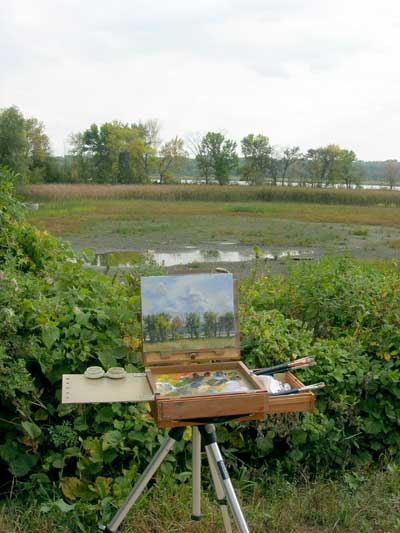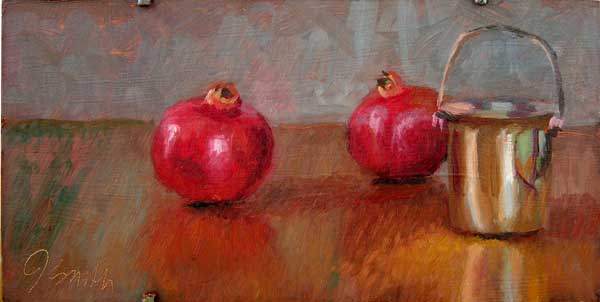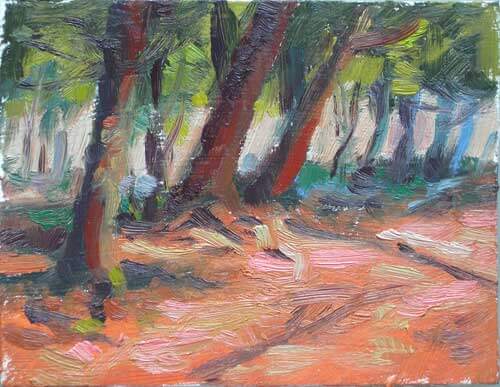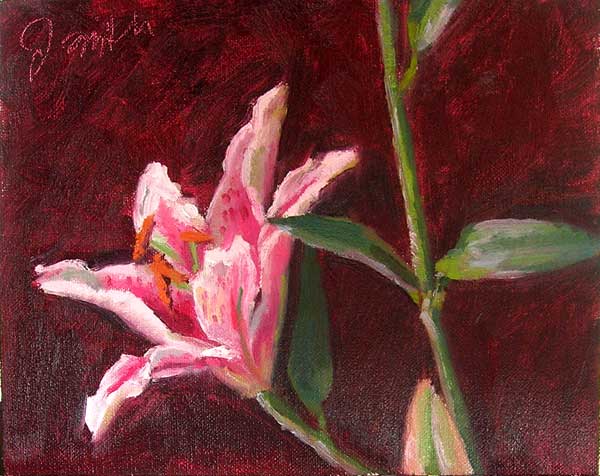First Touches of Fall | Plein air painting at the Minnesota River Valley
One of the great aspects of living in Minnesota is the drama of all four seasons. It seems like seasons happen all at once here. It’s suddenly spring, or it’s suddenly winter. But in reality, when you finally take a moment to stop and look around, change happens very gradually, over a period of time. We ease from one season into the next. I had my moment to stop and look around when painting First Touches of Fall.
On the day that I was out, things in the Minnesota River Valley were still, for the most part, in summer mode. Lots of green, a few wild flowers, plenty of birds. But when you really dug into the scene and looked a bit closer, the touches of autumn had started to appear. The color of the green foliage was drifting to yellow. The grasses were becoming shades of brown. A few of the early adapters amongst the trees had even started to enter the realm of orange.

On a personal note, this was the first outdoor painting trip where I actually pulled over on the side of the road to paint. It’s one of those things that I’ve heard of people doing…driving around, scouting for a spot to paint, and then just parking the car on the side of the road to set up their easel. I think when I was much younger, I classified this as one of those things that I would expect a ‘REAL artist’ to do. Having done it once now, I can report back that it really was a great time and I think I did feel like a real artist. I got a kick out of watching people drive by, slow the car down, and strain to try and get a glimpse at what I was doing. I figured the REAL artist part came in when a couple of cars drove by extremely slowly four or five times.
.
.
.
The great-big super-important if-you-only-remember-one-thing-about-composition rule.
So what’s the rule? Never make any two intervals the same. That’s it. Just do that and your paintings will be improved instantly!
Okay. But what does that mean? It’s all about variety. Variety is what keeps the painting visually interesting. Look at the space between any two shapes. The distance between those visual shapes should be different than the amount of space between any other visual shapes. This is the interval. It helps to think of your painting in very abstract terms. You’re not dealing with trees and grasses and rivers anymore. We’re talking about green shape, brown shape, light blue shape. The size of the interval between all of those shapes should be different.
Lessons Learned and the Spice of Life
So on to my “lesson learned” for this painting. First Touches of Fall gives ample opportunity to play with intervals in composition. Vertically speaking you have the sky, distant hills, river, tree line, and the foreground. All of these shapes could really be placed almost anywhere in the painting, and be almost any size. The trick when plotting out a composition is to decide what is going to be the dominant thing in this particular painting, and then doing everything you can to support that feeling of dominance.
Let’s think about it in terms of the aforementioned great-big-super-composition rule. My challenge as a painter was to show the dynamic nature of the sky while keeping the rest of the painting visually interesting and playing a part in the story of the painting. I took more than half of the canvas to show the sky. But to keep it from being boring, I was very conscious not to divide my canvas in half. Comparing the height of the grass shape from top to bottom, it’s less than the height of the tree line. I’ve kept the size of the distant hills larger than the size of the river, but smaller than the tree line. No two intervals or shapes should be the same size.
Now take a look at the trees. The trees help to give a sense of scale to the composition. As a viewer, you can judge the majesty and movement in the sky by comparing and contrasting it with the trees. But get ready, because here comes that variety thing again. The trees are shapes just like everything else. And just like everything else, it is important to vary the shapes of the trees and the intervals between the them. That’s what allows your eye to go in and wander. If the shapes become too much the same, you lose the rhythm that an interesting shape creates, and your eye gets stuck. Your eye wants to find patterns; it is seeking out and focusing on those things that are the same.
The idea is to keep the eye interested enough to move around the painting. The goal as an artist is to decide where you want the viewer’s eye to go, and do everything you can to guide it there.




